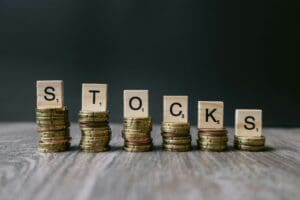Introduction
What follows is an unedited copy of subject report that I received this morning from Dann Cushing which I am passing on to you for your edification.
The Current Situation
“Well, you don’t get too many weeks like that in financial markets, do you? Declining 10% is very normal for the stock market within any given year, but having it occur within just two days is definitely rare.
Since peaking in mid-February, the S&P 500 is now down 17%, and as of writing this (Monday morning), it looks set to head somewhat lower. Funny enough, though, that takes us all the way back to price levels not seen since (insert drumroll)…this past August? That’s not very long ago, and in reality then, is not such a dramatic reaction to the complete reordering of global trade which has occurred in the interim. The question, of course, is does the sell-off continue?
First, some context: as shown in the chart below, equity markets declining much more than they already have this year typically require a full-blown recession (red dots are the maximum price decline of the S&P 500 during each of the last 45 years):
Declines of greater than 15% within a given year occur one-third of the time, or in other words fairly regularly but, interestingly, as often as not, that same year’s final return ends up being positive. Drops exceeding 25%, though, only align with major economic contractions so,
- at this point, the current sell-off looks more like an adjustment of above-average valuations, not a major shift in earnings expectations
- but will these tariffs slow growth enough to cause a recession in the U.S. and Canada, therefore implying a greater market decline and, if that’s a risk,
- will central banks come to the rescue by cutting interest rates, or
- will their hands be tied by inflation resulting from the tariffs?
Growth Expectations
On the growth question, it is important to recall that tariffs (at this point) are being implemented on goods, not services. The U.S. is primarily a services-based economy; only about 30% of US GDP is attributable to goods. In addition, the U.S. economy is remarkably insular, with about 85% of it domestically oriented so, while tariffs are unquestionably a straight-forward new tax on U.S. consumption that will slow growth, the scope of direct impact on the economy is relatively small. This is part of the reason why major investment banks like Goldman Sachs are still predicting positive U.S. GDP growth in 2025.
Now, that said, this new tax is not occurring in a vacuum. U.S. immigration is being curbed – which mechanically is a drag on growth – while DOGE is attempting to create significant government spending cuts, and no doubt many investment and purchase decision have recently been frozen by the policy uncertainty. Nevertheless, as mentioned above, the tariffs themselves affect a relatively small part of the U.S. economy. Additionally, if the current tariff rates are indeed a ceiling as Treasury Secretary Scott Bessent has said, then the news flow from here will be incrementally positive as lower or 0% tariff rates are negotiated…and, with the major tariff news event complete, the narrative on U.S. policy is now set to switch focus to stimulative measures like tax cuts.
In Canada, meanwhile, we suddenly look like the relative winners within a not-so-great game. As it currently stands, we generally have lower U.S. tariffs imposed on our goods relative to the rest of the world. A quick summary:
- 0% tariff on USMCA compliant goods (USMCA = “new NAFTA”)
- 10% tariff on non-USMCA compliant energy and potash
- 25% tariff on non-USMCA compliant goods
- 25% tariff on steel and aluminum
- 25% tariff on the non-US content of automobiles
To be sure, Canada is worse off than it was – but nevertheless better than most. The challenge, however, is that:
- Canada is entering this period while already coping with an economy faltering from the impact that high interest rates have had…
- and, additionally, to the extent we place retaliatory tariffs on U.S. products – and some have already been enacted – those serve as a new tax on our consumers
so, while the U.S. economy appears fairly resilient despite tariffs, Canada faces a more precarious economic environment ahead. This raises the question of whether central banks will step in to support the economy by cutting interest rates and that, in turn, is a question about inflation.
Inflation Expectations
As discussed in our prior Street Savvy update, inflation resulting from higher taxes is very different from the inflation that we witnessed post-pandemic. At that time, the “free money” being handed out via government stimulus cheques [checks] directly to consumers promoted consumption. In contrast, the higher taxes we are about to witness means that consumers have less money with which to make purchases, because a larger portion of each purchase indirectly goes to the government via the new taxes. It is literally the opposite of what occurred in 2021 and 2022. Also, since tax increases only cause a one-time increase in prices, central banks tend to “look through” them.
Zooming in on inflation, by far largest component of the CPI calculation is shelter costs. In Canada, those have been falling as rents have declined for past eight-months straight, and a similar trend has been in place in the U.S.:
Coincident with this, declining mortgage rates in recent months have led to a drop in “owners’ equivalent rent”. With these two CPI-shelter items in negative territory and new taxes stifling demand, it will be straightforward for central banks to justify that “core” inflation is under control, allowing for interest cuts.
Financial Market Expectations
Where does this leave financial markets? Well, as a starting point, the forward-P/E ratio of the S&P has now dropped from an elevated 22x earlier this year, back down to its post-financial crisis average level of 18x. Any further drop from here arguably puts the market “on sale”. A cut in interest rates by the Fed would serve to accentuate the dynamic but, that said, there is going to remain an adjustment period for both companies and investors.
- For companies that import goods, they now need to equilibrate existing inventories, new prices on incoming inventory, and (likely) more tariff rate changes that result from further negotiations. It appears there will also be a supply-chain bottleneck event, like witnessed during COVID, as we understand from anecdotal conversations with large corporate buyers this weekend that deliveries are backing up at customs, as officials work to implement the calculation and collection the new taxes.
- For investors, Q1 reporting begins next week and there is currently zero incentive for a CEO or CFO to stick out their neck and give an optimistic outlook – or frankly, any outlook at all. As a result, a recovery in investor confidence and therefore stocks prices is likely to be a ”show-me” story for the time being.
Conclusion
Aside from a continued knee-jerk, fear-driven selloff in the very immediate future, though, the above points about the scope of economic impact are likely to prevail and stabilize market prices. Ultimately, however,
- businesses and consumers will adjust,
- government tax cuts and other support measure will kick-in,
- and interest rates will fall.
May flowers might be a bit optimistic, but as the first chart above showed, the eventual result – even in the face of selloffs like the current one – tends to be rosy.”


















